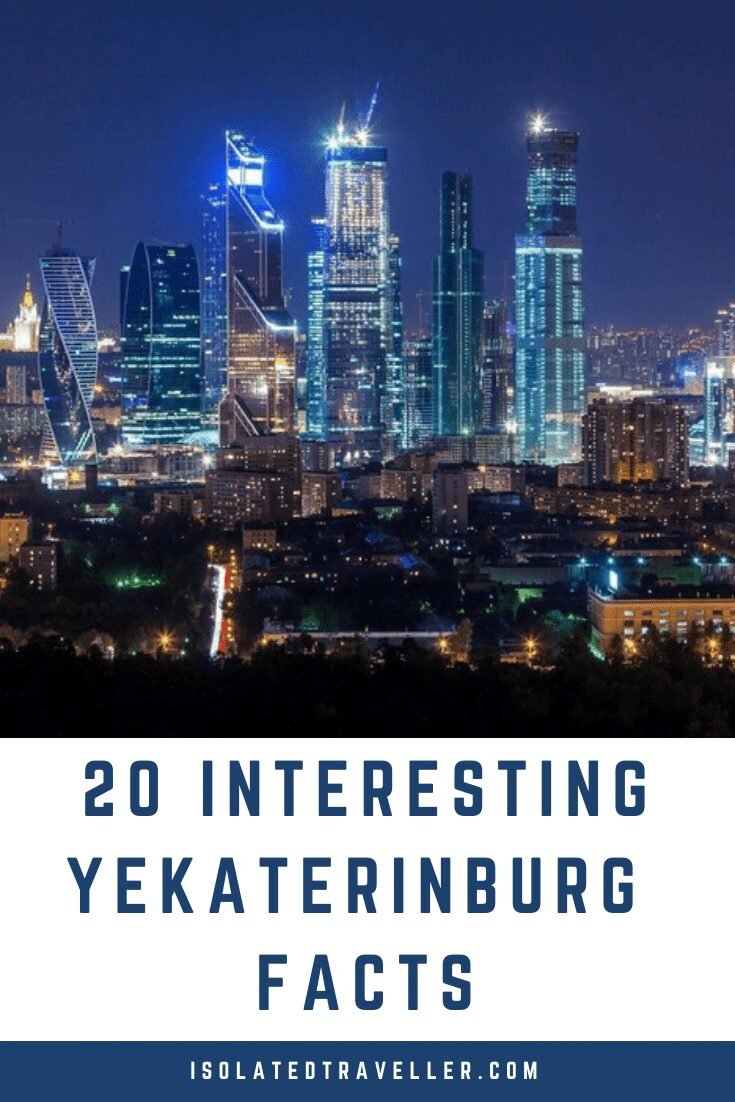Facts About Yekaterinburg:
-
Yekaterinburg is the fourth-largest city in Russia.
-
The asteroid 27736 Ekaterinburg was named in the city’s honour on 1 June 2007.
-
Yekaterinburg was founded on 18 November 1723 and named after the Russian emperor Peter the Great’s wife, who after his death became Catherine I, Yekaterina being the Russian form of her name.
-
The city has a total area of 191 sq miles.
-
Yekaterinburg uses the Yekaterinburg Time, which is five hours ahead of UTC (UTC+5)
-
Yekaterinburg is the administrative centre of Sverdlovsk Oblast.
-
Yekaterinburg is twinned with: San Jose, United States; Wuppertal, Germany; Guangzhou, China; Most, Czech Republic; Plzeň, Czech Republic; Hamedan, Iran; Genoa, Italy; Ferentino, Italy; Incheon, South Korea.
-
A ballistic missile submarine of the Project 667BDRM Delfin class is named Ekaterinburg in honour of the city.
-
The BRIC countries met for their first official summit on 16 June 2009, in Yekaterinburg.
-
Yekaterinburg hosted 4 matches of the 2018 FIFA World Cup, the matches were played on the upgraded Central Stadium.
-
In 2002, UNESCO recognized Ekaterinburg as one of the 12 ideal cities in the world.
-
In 1979 Ekaterinburg was included in the list of Russian historic towns and cities.
-
Ekaterinburg was the first city in Russia where gold ore was found and gold mining began.
-
The world’s first jet engine aircraft BI-2 was tested in Ekaterinburg.
-
Yekaterinburg was the last place where the last Russian emperor lived because there ended the life of the Romanov family.
-
The population of Ekaterinburg is about 1.387 million, as of 2012.
-
Yekaterinburg will host the 2023 Summer Universiade. It will be the fourth time that Russia has hosted a Universiade.
-
The city possesses a humid continental climate under the Köppen climate classification. The average annual temperature is 3 °C (37 °F).
-
Yekaterinburg is situated right on the border between Europe and Asia.
-
The city lies along the Iset River, which is a tributary of the Tobol River, and on the eastern slope of the Ural Mountains.


